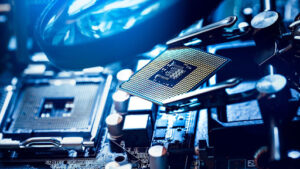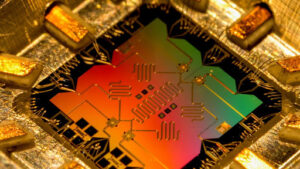In the realm of technological advancements, surplus computing is a concept that’s gaining traction. It’s the idea of utilising excess computational power that often lies dormant in our devices. From smartphones to laptops, we’re surrounded by a wealth of unused potential that’s waiting to be harnessed.
This surplus, if properly managed, can be a game-changer in the world of information technology. It’s a concept that could redefine the way we perceive and use our devices. So, let’s dive into the world of surplus computing, exploring its potential benefits, applications, and the challenges it presents.
Surplus Computing
Surplus computing originates from recognising a vast resource gone unused: the ample computational power lying idle in devices. This excess power unfolds with each personal computer, laptop, and smartphone, presenting an incredible opportunity in our interconnected world. Imitating nature’s approach, surplus computing distributes tasks across multiple devices, enabling efficient use of a collective power yet to be harnessed fully.

Potential benefits of surplus computing extend across various sectors. For example, in scientific research, it accelerates data processing, acting as a driving force behind complex calculations. Surplus computing is also emerging as an essential factor in distributed systems architecture, making edges more robust and resourceful.
However, realising these benefits isn’t free from challenges. Various aspects require close examination, and serious attention is required from software development and hardware perspectives. From an infrastructure standpoint, adopting surplus computing demands keen foresight and planning. Intelligent allocation algorithms, for instance, ascertain that computational tasks are spread evenly among available devices, addressing issues related to overload and redundant power wastage.
In the realm of security and privacy, reservations persist when it comes to surrendering device power for collective use. Meticulous safeguards must be in place to retain user’s trust while implementing surplus computing. Also, there’s the prospect of energy consumption. Without control mechanisms, an adoption of surplus computing could inadvertently lead to a spike in energy use, creating a paradox instead of achieving energy efficiency.
The Role of Surplus Computing in Today’s Tech Landscape
Surplus computing holds a prominent position in the current technology landscape by facilitating effective resource utilisation. It transforms underused individual devices into a collective powerhouse, enhancing the computational abilities beyond conventional methods. Leveraging the latent power of personal devices, it forms integral strands in the web of digital advancement and resource management.

Embedded within the tech world, surplus computing impacts three pivotal areas—scientific research, distributed systems, and digital progress. In scientific research, it accelerates data processing by breaking tasks into smaller pieces for distributed execution. For instance, the SETI@home project harnesses the power of millions of computers worldwide to analyse radio signals for signs of extraterrestrial life.
In distributed system architecture, surplus computing masterminds an efficient task allocation process. It paves the way for distributed applications like Bitcoin mining and protein-folding simulations. Distributed tasking further advances into fields like distributed rendering, where a single image is broken into parts, processed simultaneously, evaluated for coherence, and reassembled to form the final image.
Advantages of Surplus Computing
Harnessing the power of idle devices, surplus computing exhibits significant advantages across various sectors. Key among these are the enhanced computational speed, cost-effectiveness, and support for research initiatives, thus making it a game-changer in the computing landscape.
The first advantage of surplus computing lies in accelerated processing speeds. By utilising unexploited computation capacity from numerous devices, data analysis and processing are boosted. Complex computations, such as protein folding simulations in scientific research, could reach solutions in days instead of taking years.
Secondly, surplus computing provides a cost-effective approach to meeting high computational needs. Instead of investing in expensive, high-power servers, organisations capitalise on the unused computational power of existing devices. This leads to considerable savings on hardware investments and maintenance costs.
Lastly, surplus computing contributes to energy efficiency. In an era where green computing and sustainability are top priorities, leveraging the idle power of personal devices promotes efficient energy use. This approach aids in CO2 reduction, significantly aligning with global efforts towards environmental preservation.
